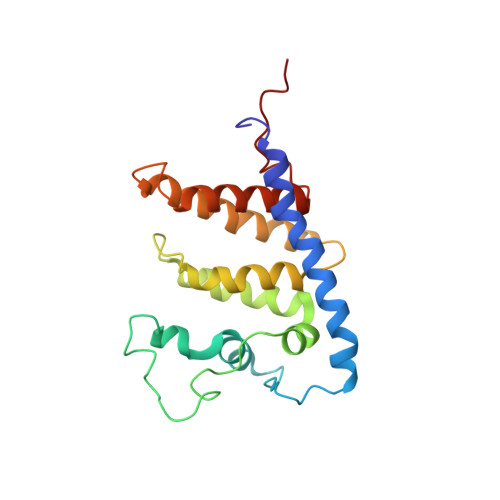Solution structure of the core SMN-Gemin2 complex.
Sarachan, K.L., Valentine, K.G., Gupta, K., Moorman, V.R., Gledhill Jr, J.M., Bernens, M., Tommos, C., Wand, A.J., Van Duyne, G.D.(2012) Biochem J 445: 361-370
- PubMed: 22607171
- DOI: https://doi.org/10.1042/BJ20120241
- Primary Citation of Related Structures:
2LEH - PubMed Abstract:
In humans, assembly of spliceosomal snRNPs (small nuclear ribonucleoproteins) begins in the cytoplasm where the multi-protein SMN (survival of motor neuron) complex mediates the formation of a seven-membered ring of Sm proteins on to a conserved site of the snRNA (small nuclear RNA). The SMN complex contains the SMN protein Gemin2 and several additional Gemins that participate in snRNP biosynthesis. SMN was first identified as the product of a gene found to be deleted or mutated in patients with the neurodegenerative disease SMA (spinal muscular atrophy), the leading genetic cause of infant mortality. In the present study, we report the solution structure of Gemin2 bound to the Gemin2-binding domain of SMN determined by NMR spectroscopy. This complex reveals the structure of Gemin2, how Gemin2 binds to SMN and the roles of conserved SMN residues near the binding interface. Surprisingly, several conserved SMN residues, including the sites of two SMA patient mutations, are not required for binding to Gemin2. Instead, they form a conserved SMN/Gemin2 surface that may be functionally important for snRNP assembly. The SMN-Gemin2 structure explains how Gemin2 is stabilized by SMN and establishes a framework for structure-function studies to investigate snRNP biogenesis as well as biological processes involving Gemin2 that do not involve snRNP assembly.
- Graduate Group in Biochemistry and Molecular Biophysics, University of Pennsylvania, Philadelphia, PA 19104, USA.
Organizational Affiliation:

















